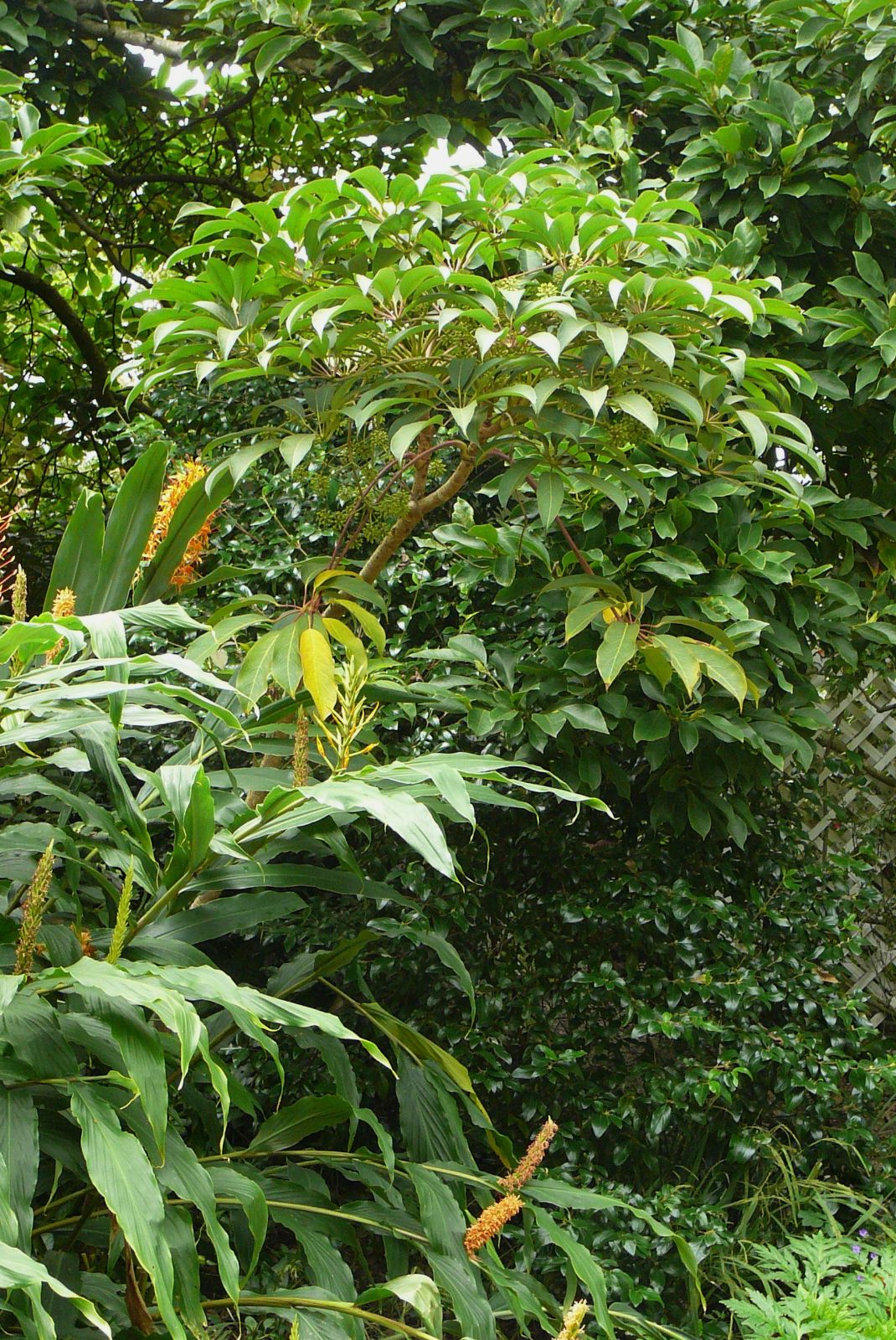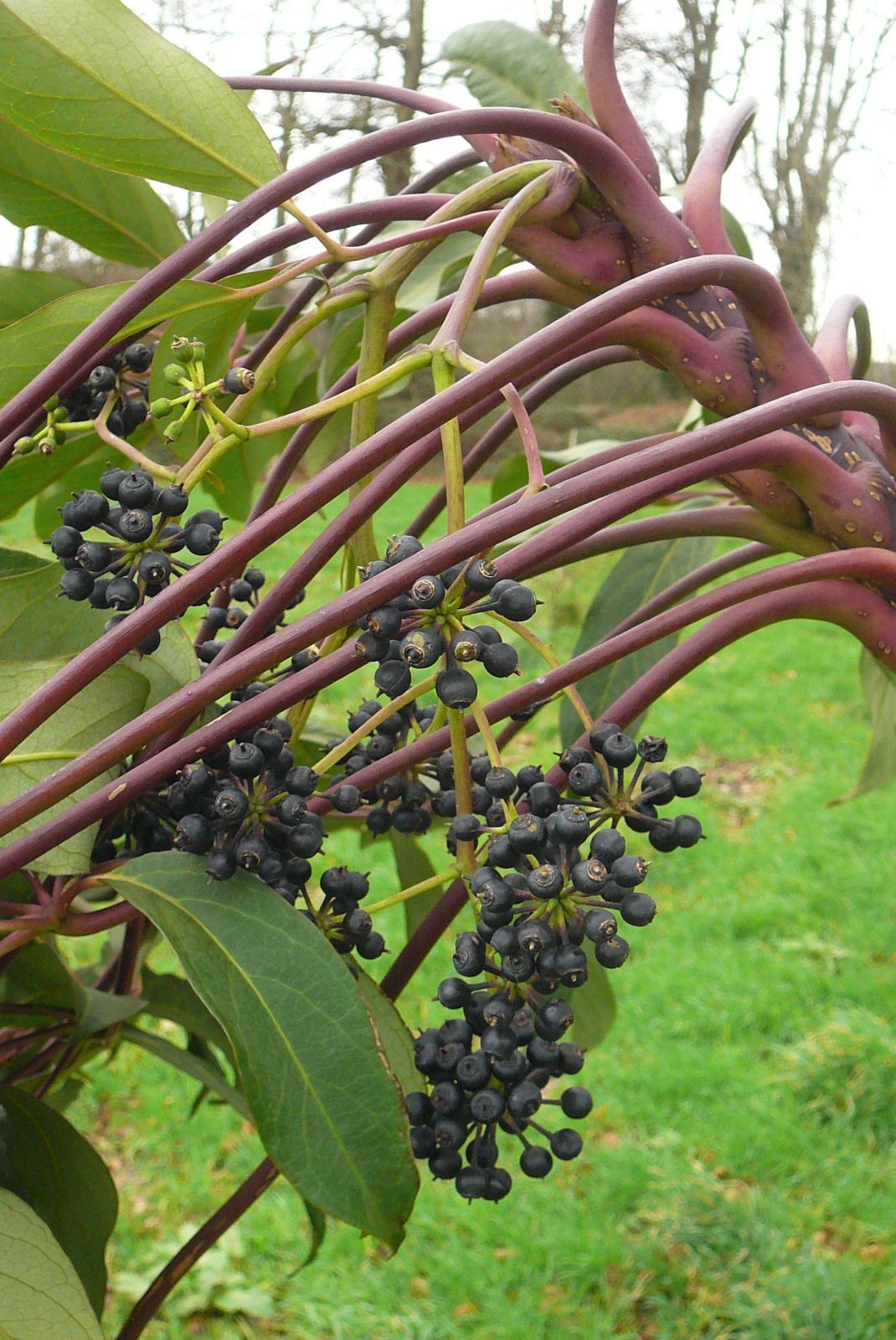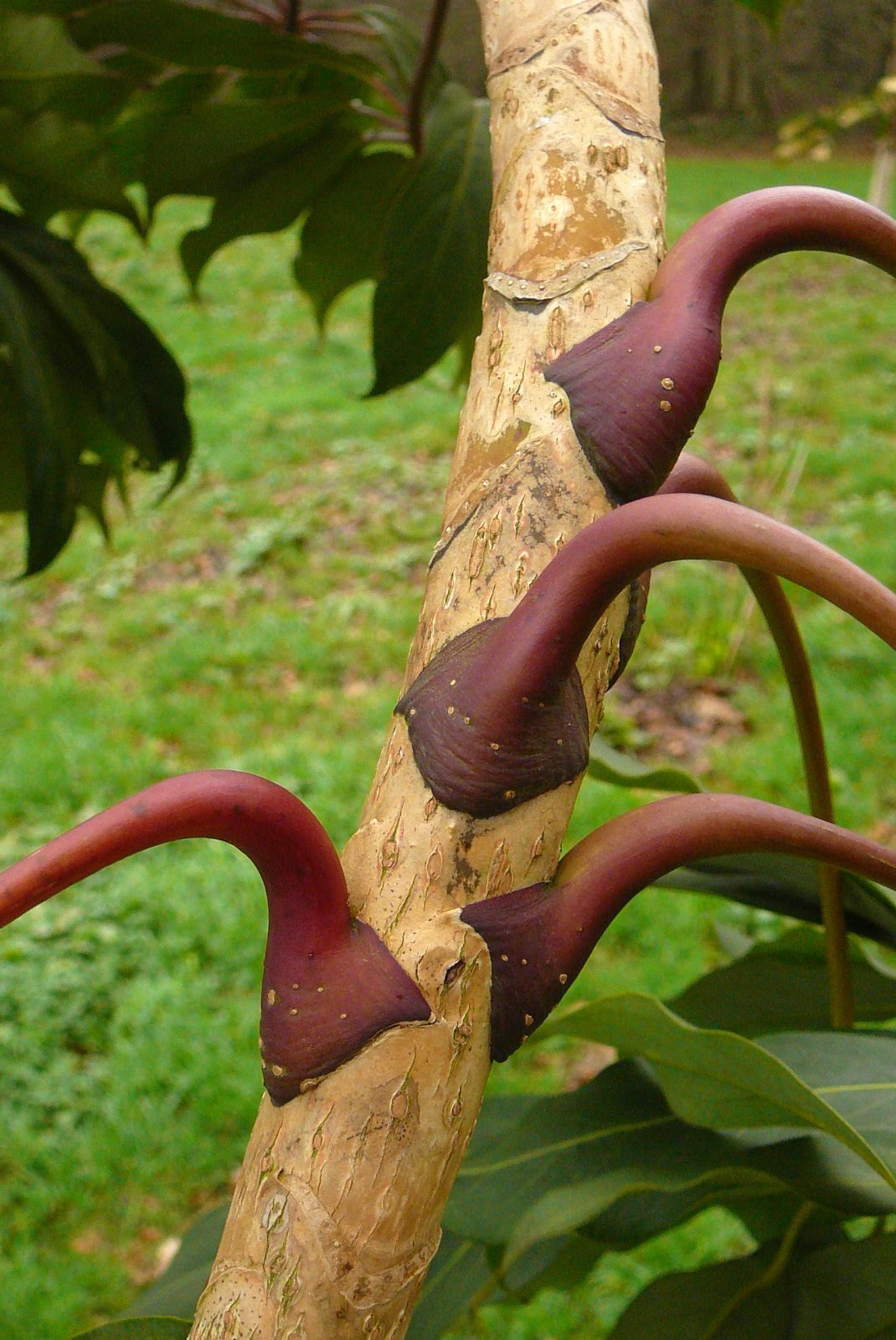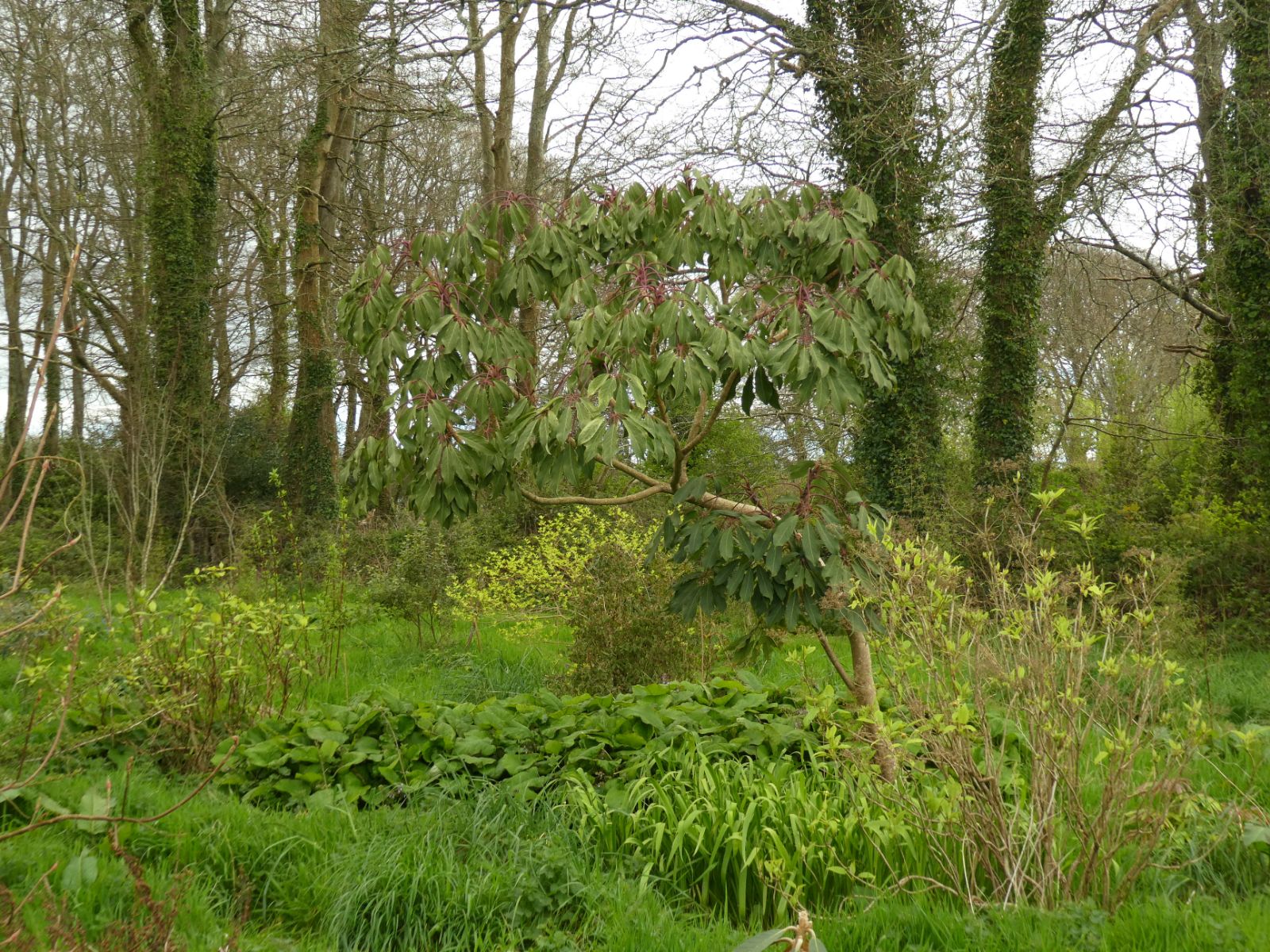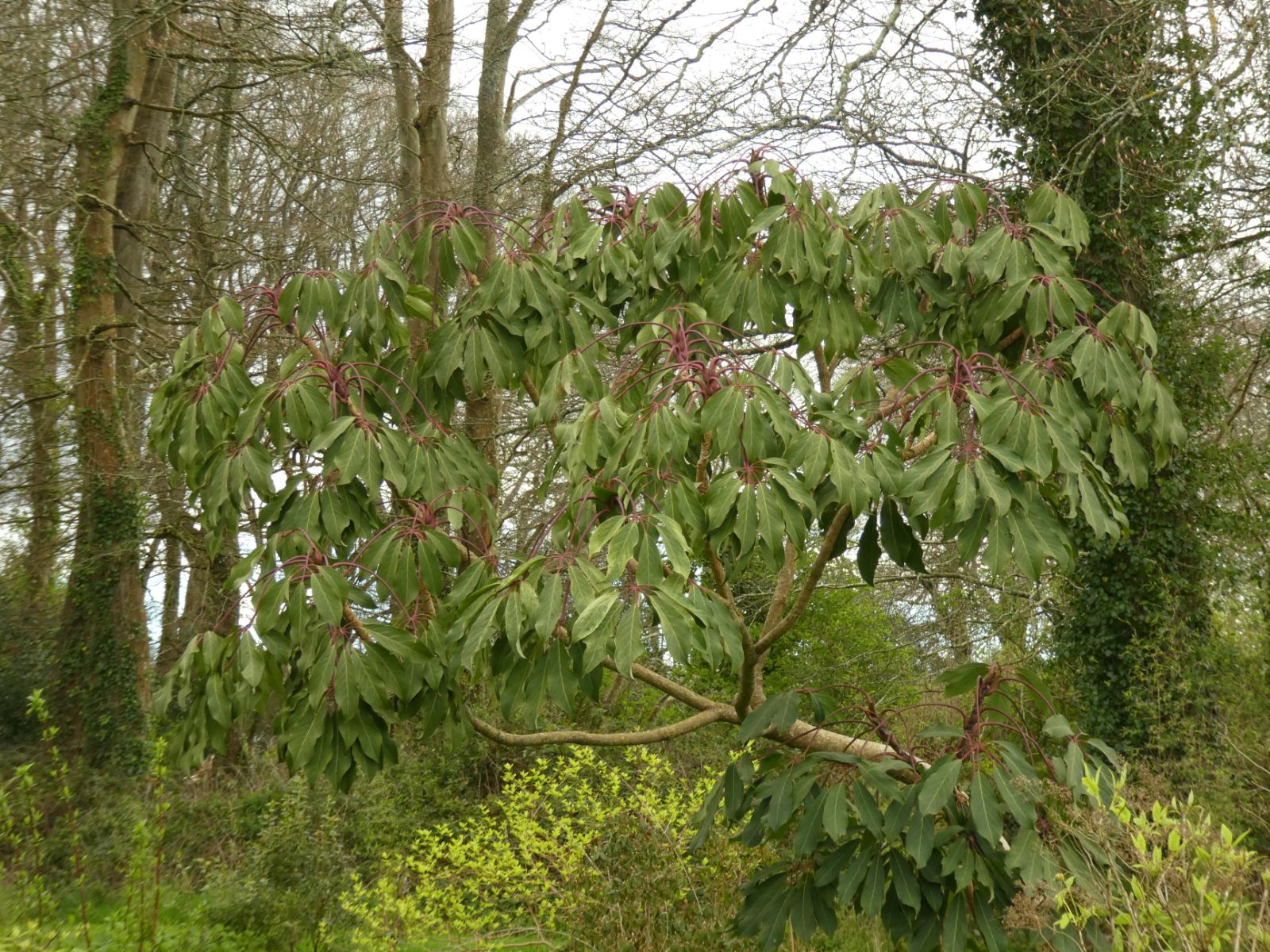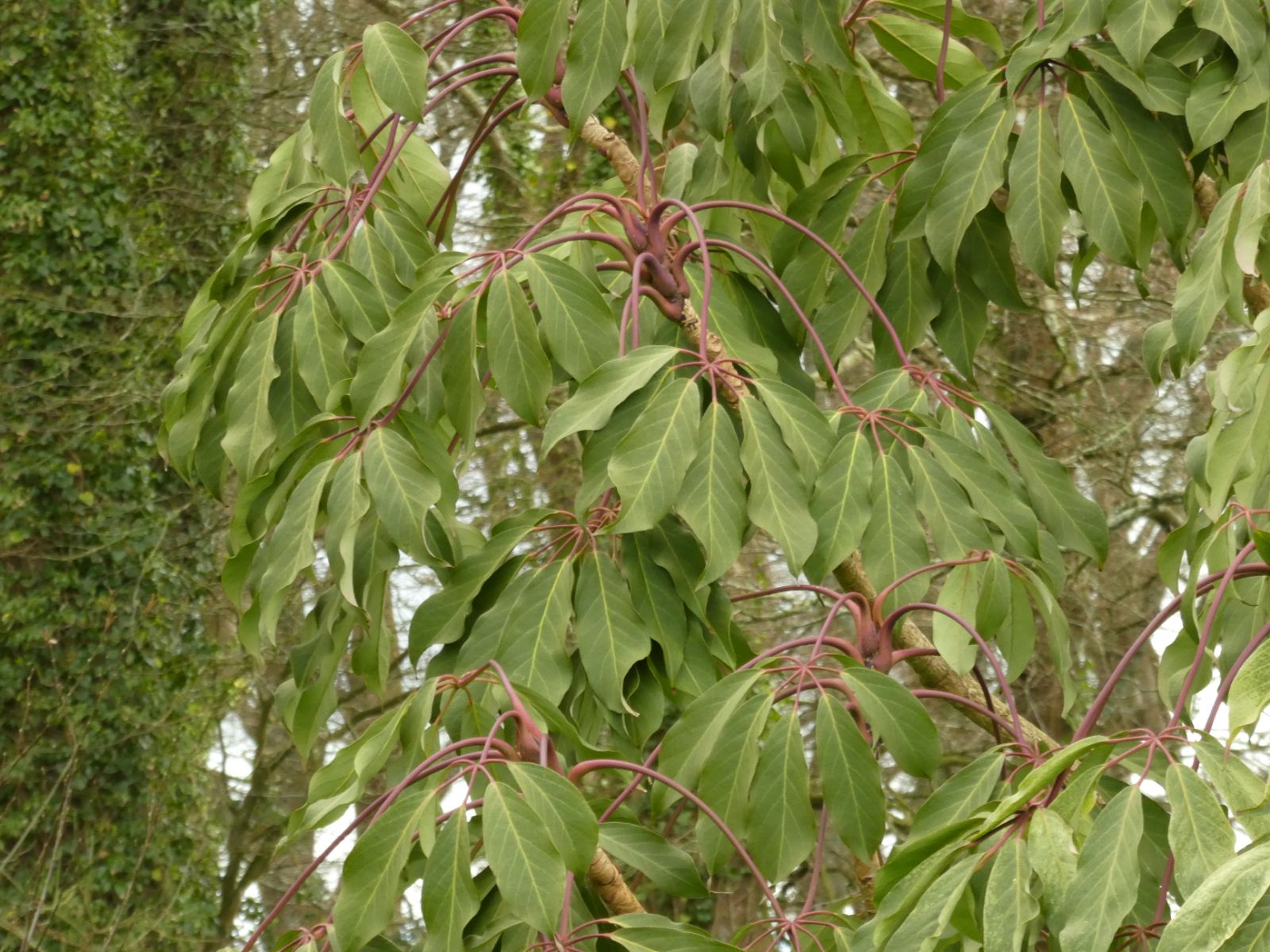Schefflera alpina
Credits
Article from New Trees by John Grimshaw & Ross Bayton
Recommended citation
'Schefflera alpina' from the website Trees and Shrubs Online (treesandshrubsonline.
Genus
Shrub or tree to 5 m. Leaves evergreen, palmate; leaflets seven to nine, leathery, 8.5–12 × 3.5–4.5 cm, elliptic, upper surface dark green, glabrous, lower surface pale green, somewhat pilose, 10–11 pairs of secondary veins on each side of the midrib, margins entire, revolute, apex acuminate; new growth purple; petiole 25–30 cm long, red. Inflorescences lateral, paniculate, primary axis ~20 cm long; composed of ~10 umbels, each with 10–15 flowers; bracts 4.5 cm long, leathery. Drupe globose to pentagonal, ~0.4 cm diameter, purple, with a persistent style. Grushvitsky & Skvortsova 1975. Distribution VIETNAM. Habitat Montane forest, between 2700 and 2800 m asl. USDA Hardiness Zone 8–9. Conservation status Not evaluated.
Schefflera alpina has been collected on several occasions from 2000 onwards by varying combinations of the Wynn-Joneses and Dan Hinkley (for example, HWJ 585, HWJ 936, HWJ 31018, BSWJ 8247), from a single specimen located in the upper parts of Fan Si Pan. It is an attractive, rather dainty species, with smallish leaflets that flush a dramatic purplish red and become dark green. Although ‘alpina’ may be a slight exaggeration it is a high-altitude plant, found above 2400 m, and reported to be capable of withstanding –15 ºC (Crûg Farm Plants online database 2007–2008), but Dan Hinkley (pers. comm. 2008) has found that it is apt to produce new growth in autumn that is at risk from frost.
Making up another small group are taxa related to S. alpina, including material currently known as S. aff. chapana HWJ 983 that forms a small tree to 7 m in the wild and similarly retains dark purple hues in the new growth. This has also been labelled S. aff. kornasii HWJ 918. From the same area again, around Fan Si Pan, in exposed sites at high altitude, another taxon (currently identified as S. aff. alpina) grows usually as a single-stemmed plant with thick leaves (B. Wynn-Jones, pers. comm. 2008).


